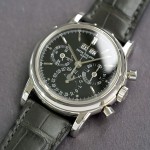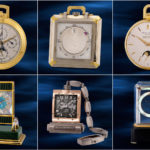Highlights: Pocket Watches at Phillips Hong Kong
Observatory triumphs and decorative masterpieces.
The upcoming Phillips Hong Kong auction includes a diverse and spectacular selection of pocket watches spanning two centuries. From early 19th‑century enamel masterpieces crafted for the Chinese market to 20th‑century tourbillon chronometers that triumphed at observatory trials, the lots on offer demonstrate the technical and aesthetic evolution of the watch over the last two hundred years.
Lot 1086 – S. Smith and Son No. 1899-1 Tourbillon Chronometer with Kew Class A Certificate
Albert Pellaton-Favre constructed the first of two tourbillons in the auction, which was later retailed by S. Smith & Son. The other, by Patek Philippe, is the work of his son, Jämes-César Pellaton. Both are depicted in Reinhard Meis’s famous Das Tourbillon.
The English and Swiss disagreed on what constitutes a chronometer. The English argued that a chronometer must use a chronometer (detent) escapement, while the Swiss considered any watch a chronometer if performed well enough – which the English would call a “Half-Chronometer”. As the Willis enamel dial boasts, the first is a chronometer by both English and Swiss reckoning, with a spring detent escapement and “Especially Good” certificate from the Kew Observatory.
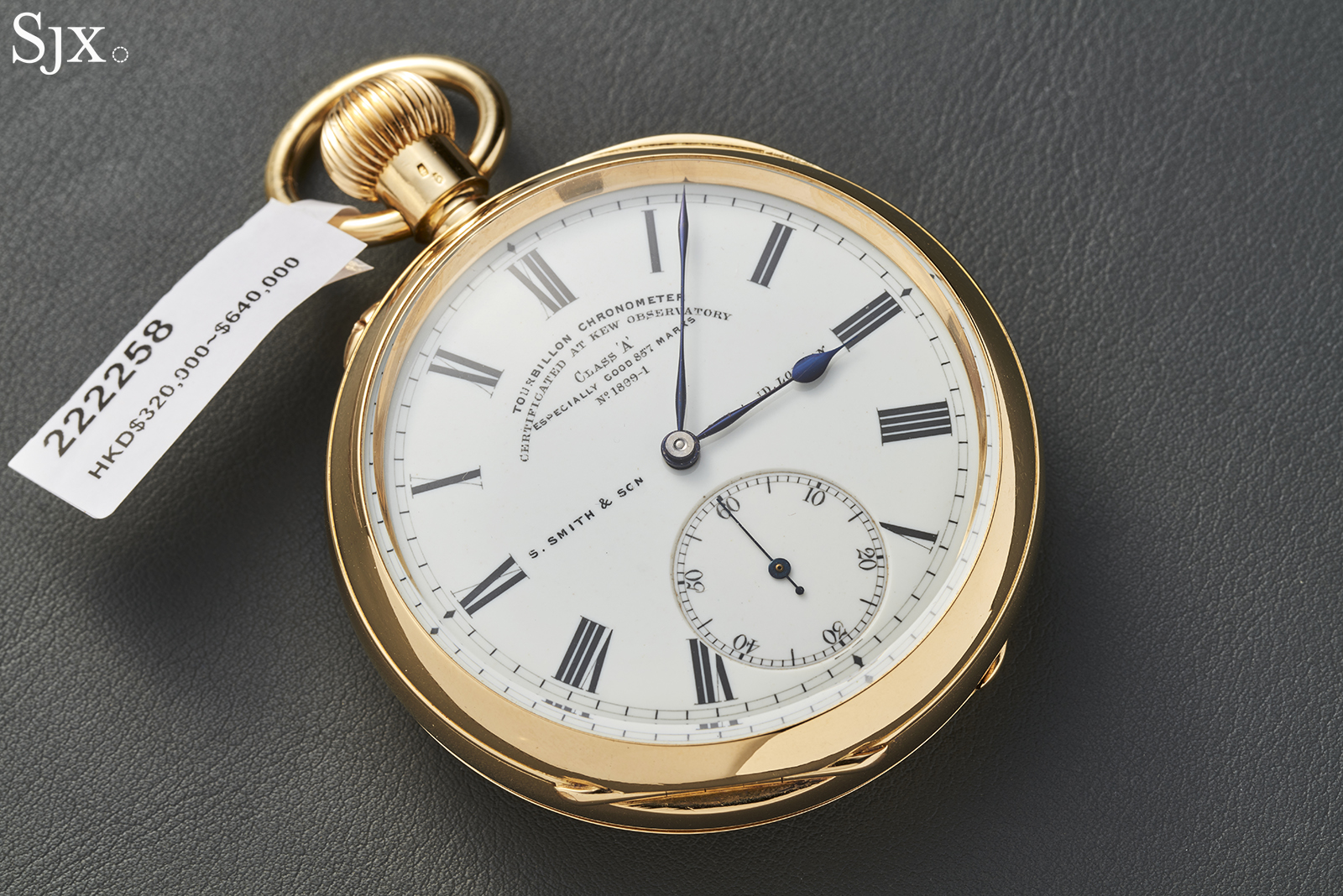
While S. Smith and Son retailed quite a number of tourbillons, including others with detent escapements, most were sourced locally, while the present lot uses a Swiss movement.
The London branch of Baume Frères ordered six tourbillon chronometers from Albert Pellaton-Favre of Le Locle, one of which held the record at Kew Observatory for about a decade, scoring 91.9 points out of 100 in 1892 – the modern Baume et Mercier company owns this watch today.
Baume & Co. also submitted this example to the Kew Observatory in 1899, where it posted a result of 85.7 in 1899, but then resold it to S. Smith and Son.
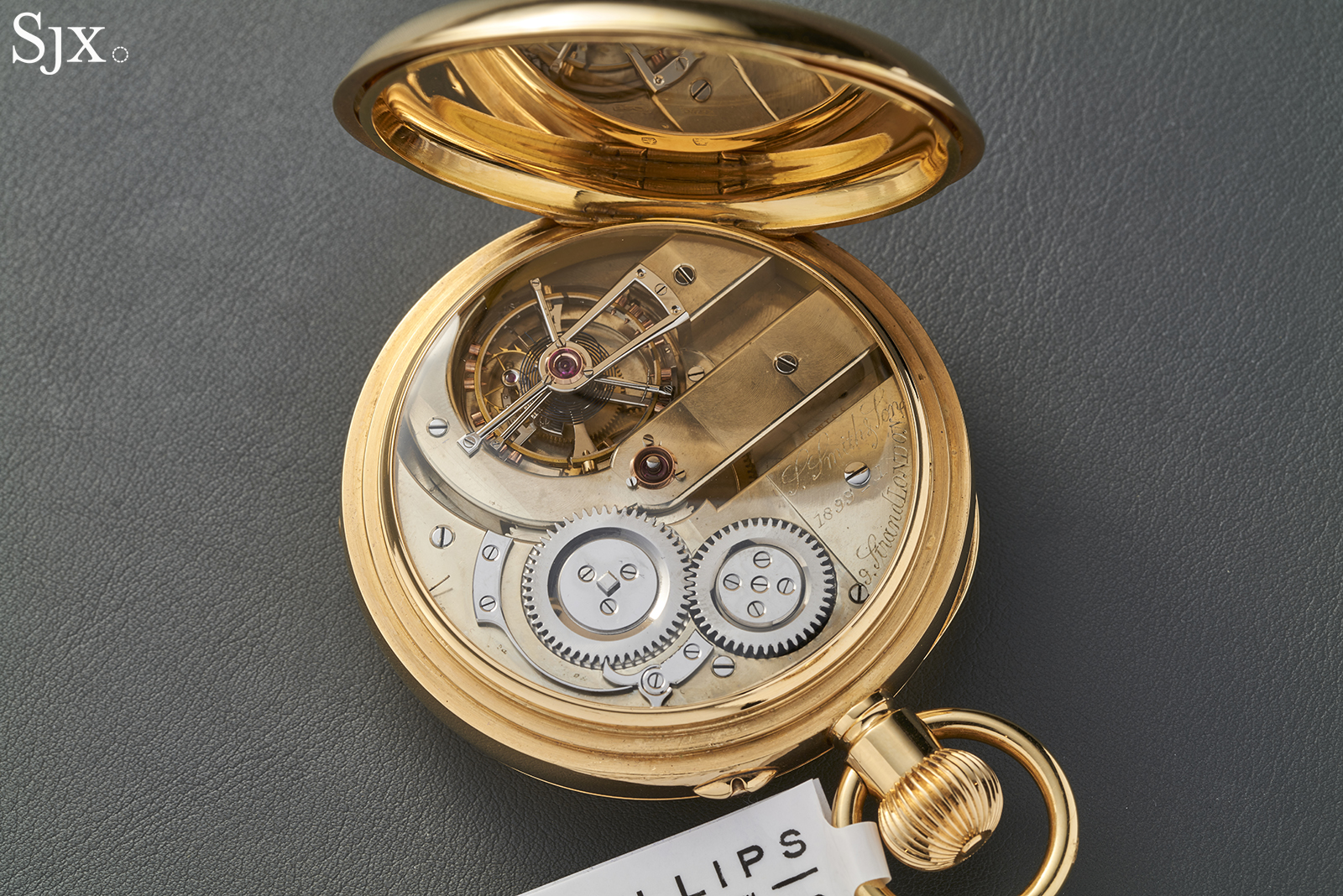
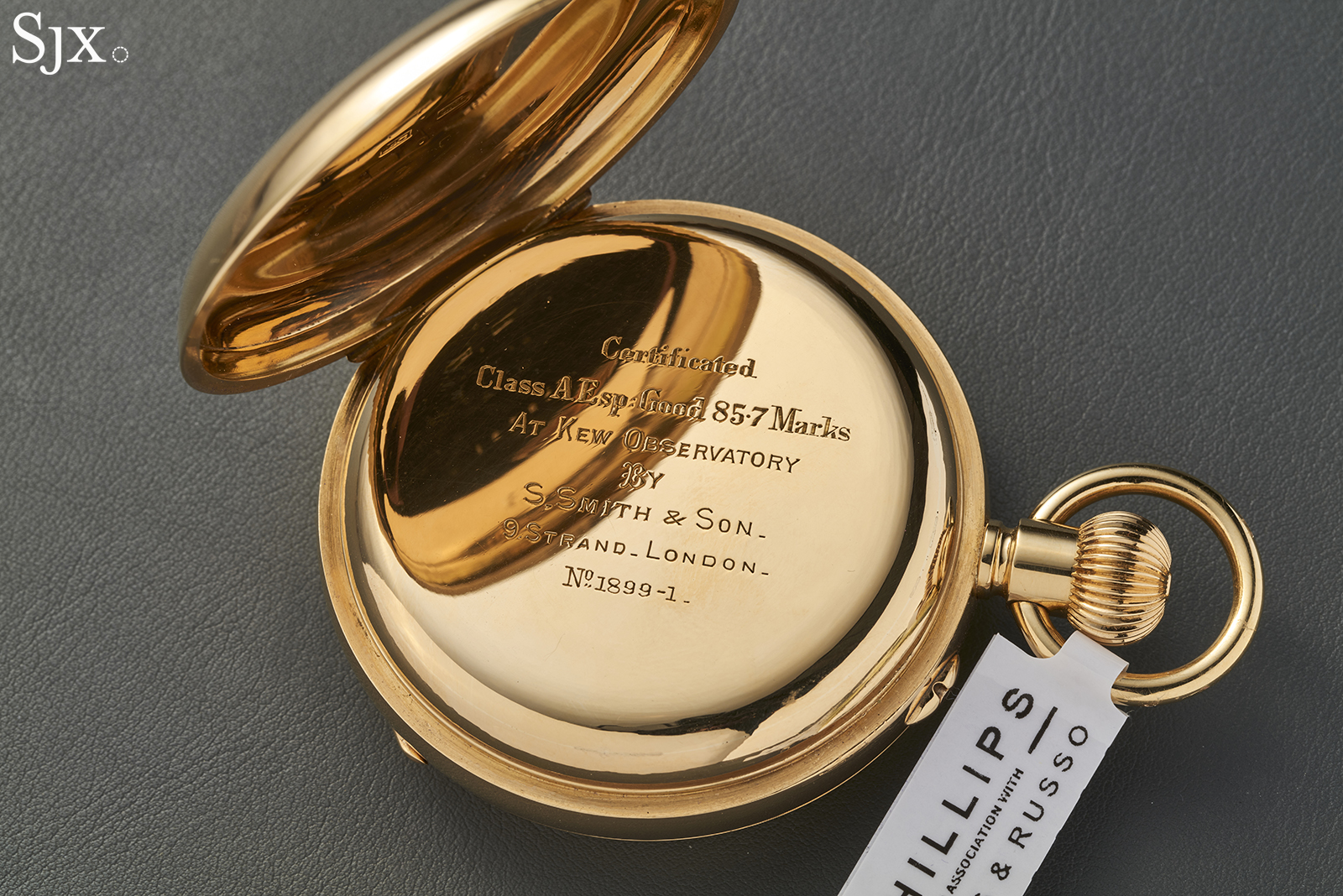
The estimate is relatively strong for a pocket watch, at HK$320,000 – 640,000 (US$41,000 – 82,100).
Lot 943 – Patek Philippe Tourbillon No. 197’585 “First Prize at 1924 Geneva Astronomical Observatory”
Patek Philippe, a dominant force at observatory trials for decades, was another patron of the Pellaton family, with this tourbillon made by Albert’s son, Jämes-César, in 1920. Master regleur J. Golay-Audemars of Patek Philippe adjusted this example in 1924 for trial at the Geneva Astronomical Observatory, where it took first place with 815 points in Class B.

Movements under 19”’ (43 mm) competed in Class A, while larger (and usually better performing) movements competed in Class B. This watch has an extremely large 21”’ (~47.3 mm) movement and a 60 mm case as a result.

To compare the two, the S. Smith & Son’s mean variation in rate across all periods (a measure of precision, not accuracy) was 0.3 seconds per day, while the Patek Philippe example varied by a mere 0.08 seconds per day. Furthermore, the mean deviation between positions was 0.39 vs 0.85 seconds per day (lower is better). Given that both watches were made to a similarly high standard in their respective periods, the difference largely highlights the technical progress that was made in the first part of the 20th-century.
The present lot is a rare example of an original Patek Philippe tourbillon with a period-correct up/down indicator. Most Patek Philippe tourbillon pocket watches with this feature had it added during the 1980’s or later, before being sold to VIP clients. Patek Philippe sold this example in 1926 and it remains in its original state.

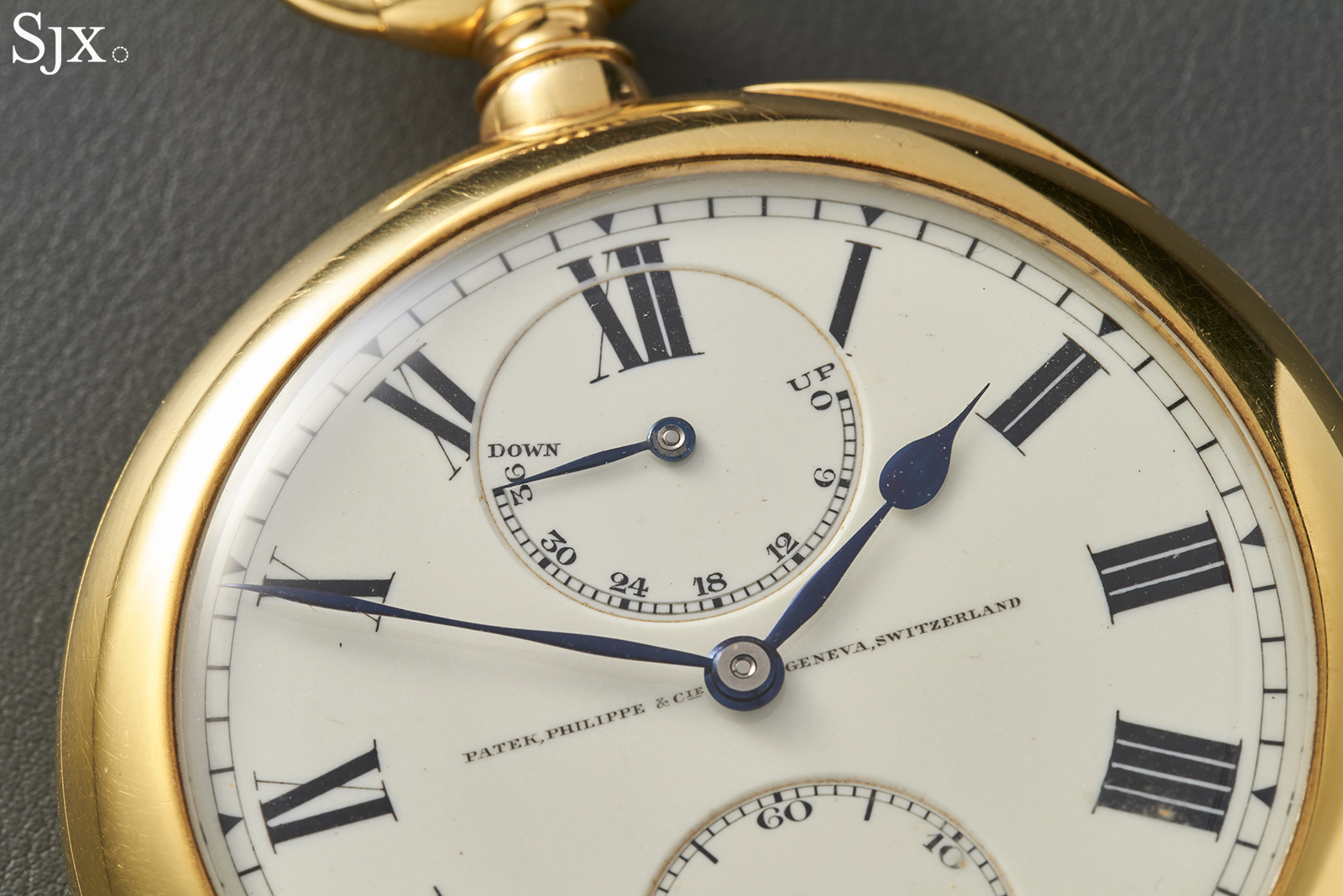
Lot 1011 – Anonymous Swiss, “Hector’s Departure”
As one might expect for an auction taking place in Hong Kong, watches made for the southern Chinese market are strongly represented. Collectors’ tastes have become somewhat homogenised over time, even more so in the age of social media, but in the past the tastes of foreign markets were much more distinct from one region to another.
English watchmaker William Ilbery – along with his mentor, William Anthony – is credited with the origination of the calibre Chinoise. Since the Chinese market favoured centre seconds hands, Ilbery moved the fourth wheel (which carries the seconds hand) of his “Chinese Caliber” to the centre, and moved the “centre” wheel to the periphery of the movement, which drives indirectly drives the hour and minute hands. Today, this approach is found in the ETA 2824, and many, many other movements.

Ilbery offshored movement manufacturing to Fleurier, Switzerland, and later moved there himself. At one point, Fleurier produced nearly all movements bound for China, with the most famous firm being Bovet, or 播喴. This movement, which was made around 1820 and includes a quarter repeater, is unsigned but almost certainly from Fleurier.

The miniature enamel, however, is almost certainly the work of a Genevan artisan. The region was, and remains, a world-leader in the decorative arts. Proof of that can be found in the Patek Philippe Museum’s extensive collection of Chinese market watches and clocks.
As wealthy Europeans became infatuated with Eastern cultures, the same was true of their counterparts in China, who enjoyed Western motifs. The miniature enamel depicts a scene from Homer’s Ilaid – Hector, hero of Troy, bids farewell to his family before going off to battle against the Greeks, where he would be felled by Achilles. The scene is flanked by red flinqué enamel and pearls. Even the dust cover underneath is elaborately engraved and enamelled.

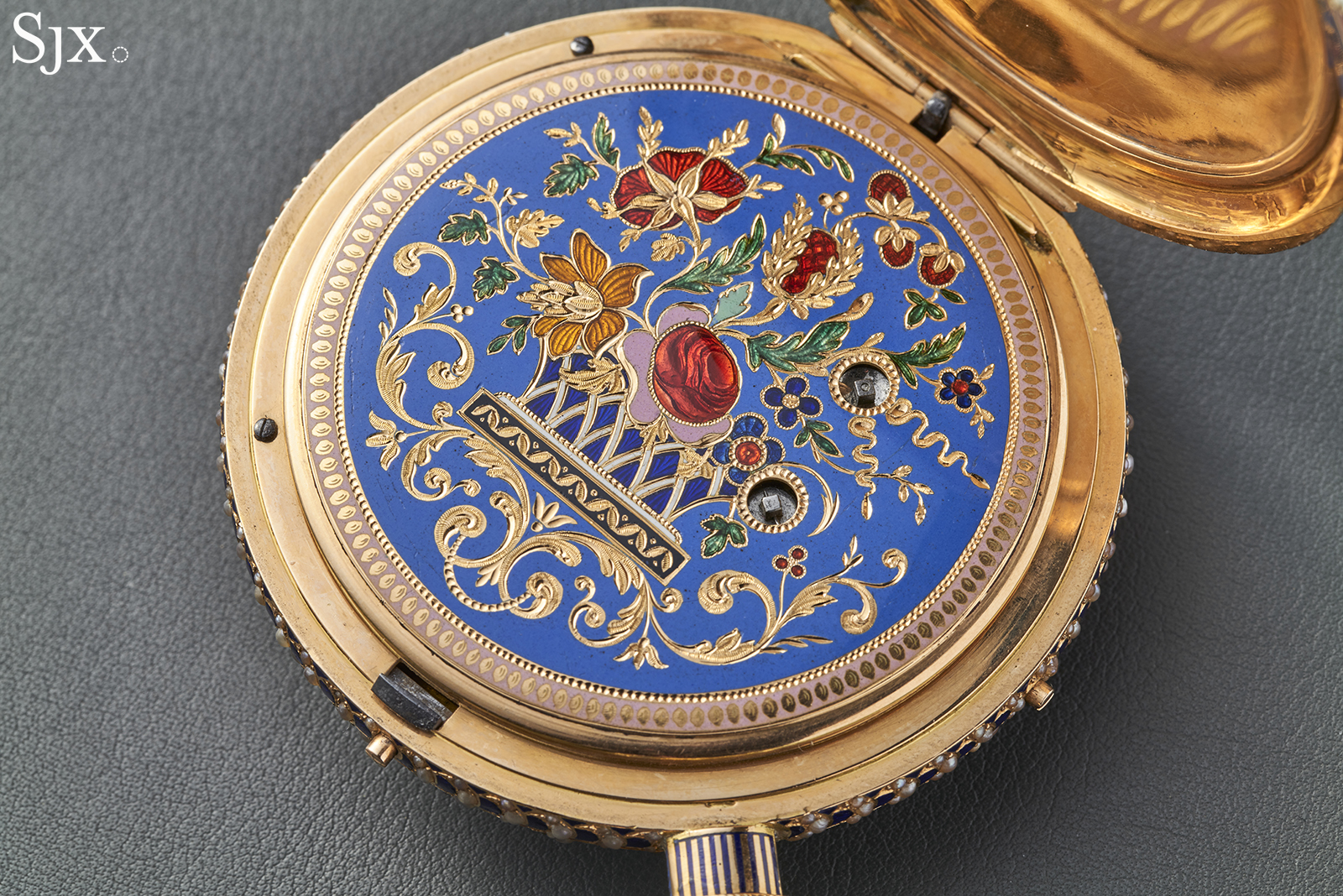
While Ilbery’s calibre Chinoise was ahead of its time, this ~1810 watch by Ilbery watch uses an antiquated fusee movement with small seconds, and a duplex escapement. Note this is a regular duplex, not the “crab tooth” duplex escapement used in some later Chinese market watches to affect a jumping seconds hand.
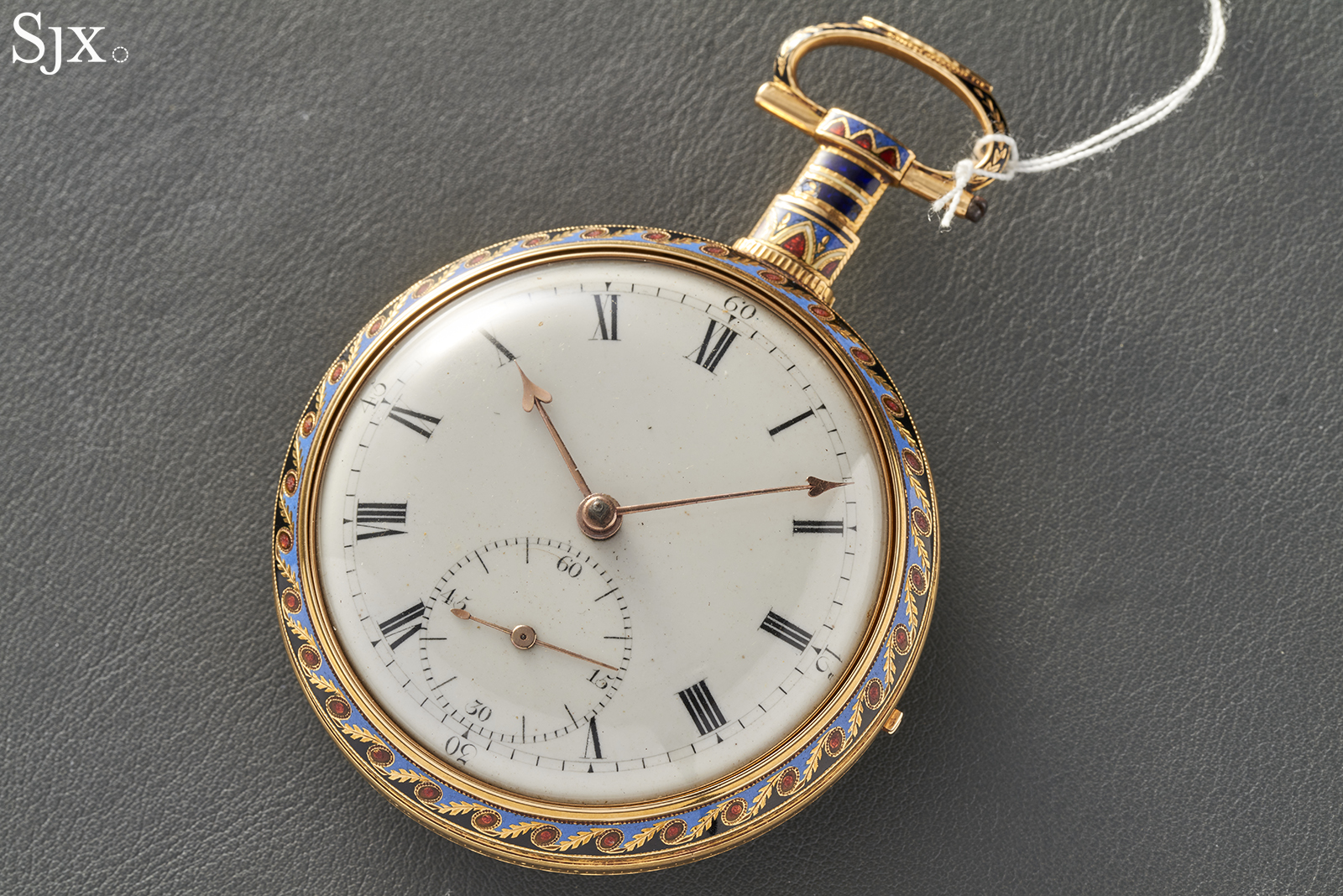
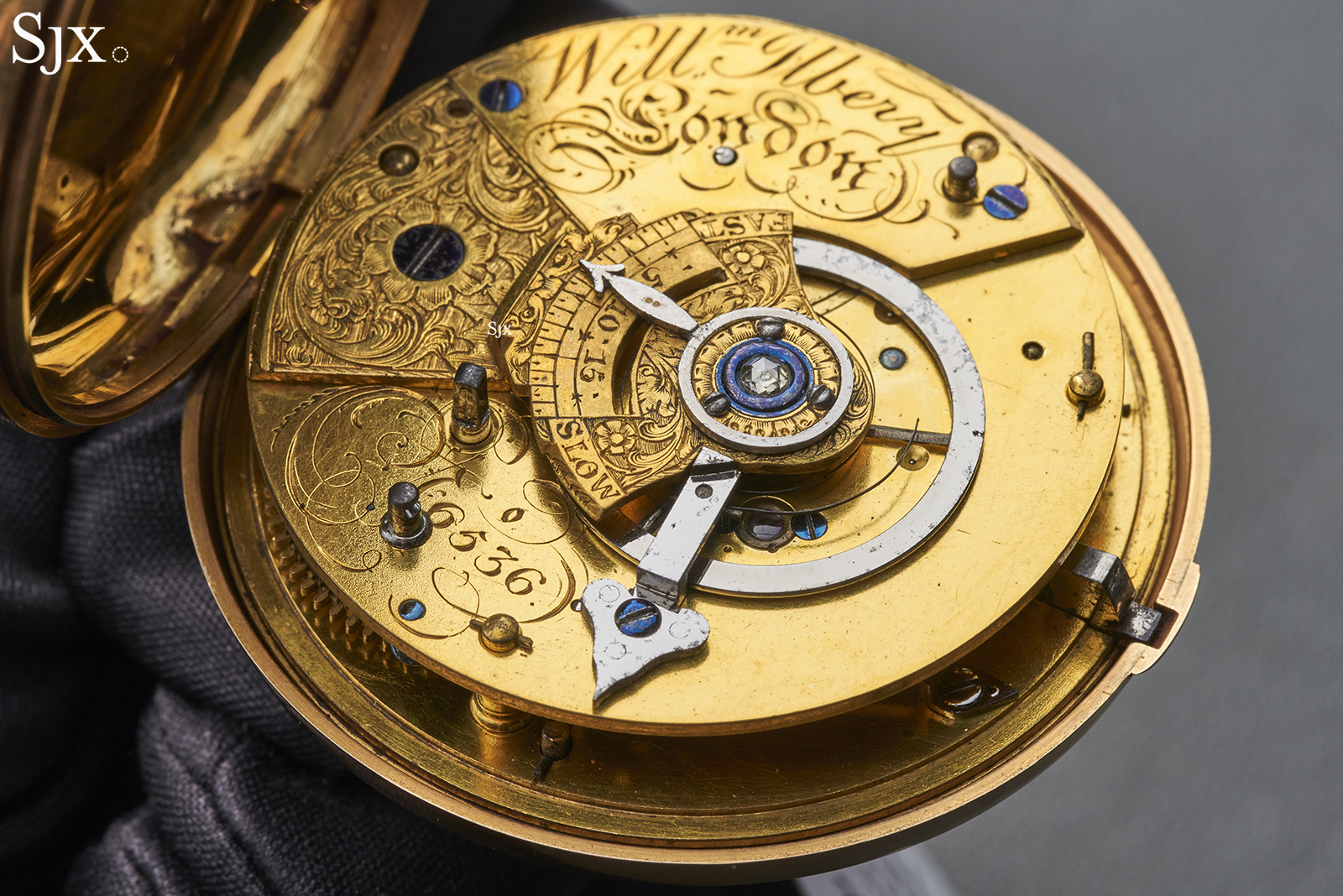
The miniature enamel painting is attributed Jean-Louis Richter of Geneva. Richter excelled at landscape painting on music, snuff, and singing bird boxes, but, on watches, he is known for his quaint “doll-like” faces and idyllic depictions of country life.
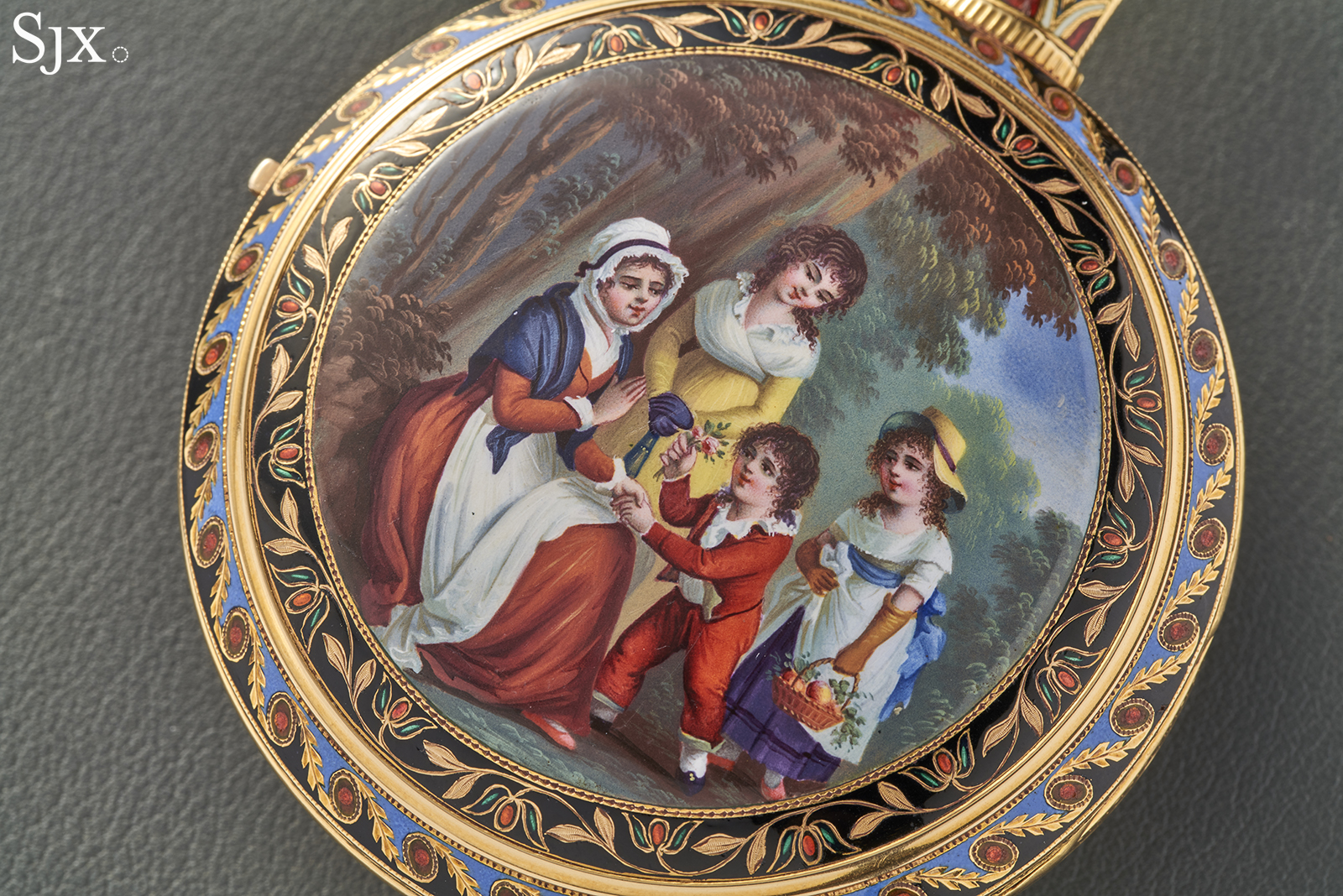
The estimate for this early Ilbery watch is HK$200,000 – 400,000 (US$25,600 – 51,300)
Lot 820 – Patek Philippe Ref. 866/54 “Lord Rivers and his friends – J.L. Agasse”
Possibly more than any other brand, Patek Philippe helped sustain Genevan enamel through the 20th century. Suzanne Rohr, who painted the current lot, is probably the most famous and prolific of the firm’s miniature enamel artisans, working for Patek Philippe from 1967 to 2016.
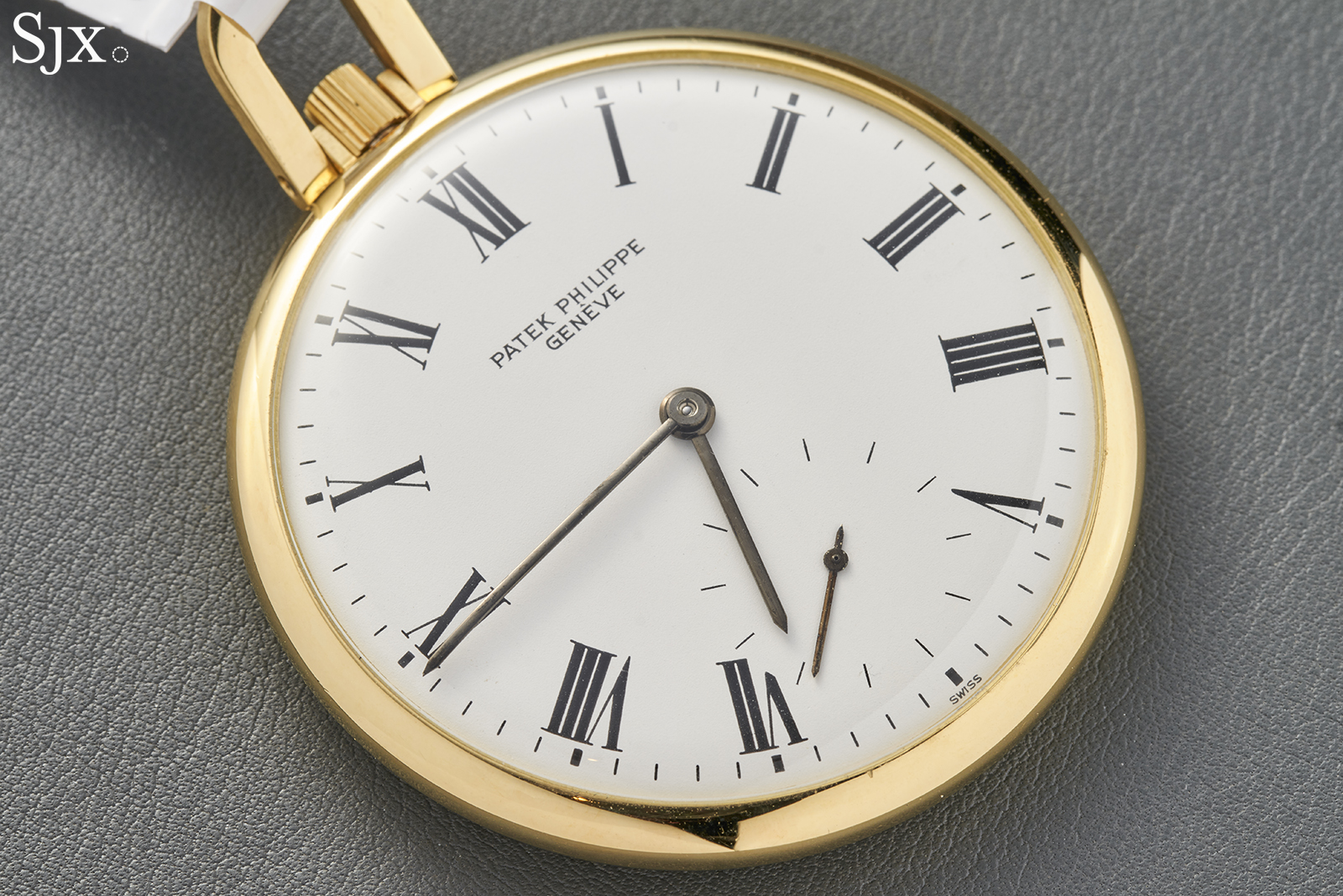
This example, rendered in 1975, replicates a work by Genevan landscape painter Jacques-Laurent Agasse from a century and a half earlier, depicting his patron, Lord Rivers of London. The original, part of the Pictet Collection in Geneva is just over a metre wide, which Rohr reproduced on the back of a 47 mm pocket watch.
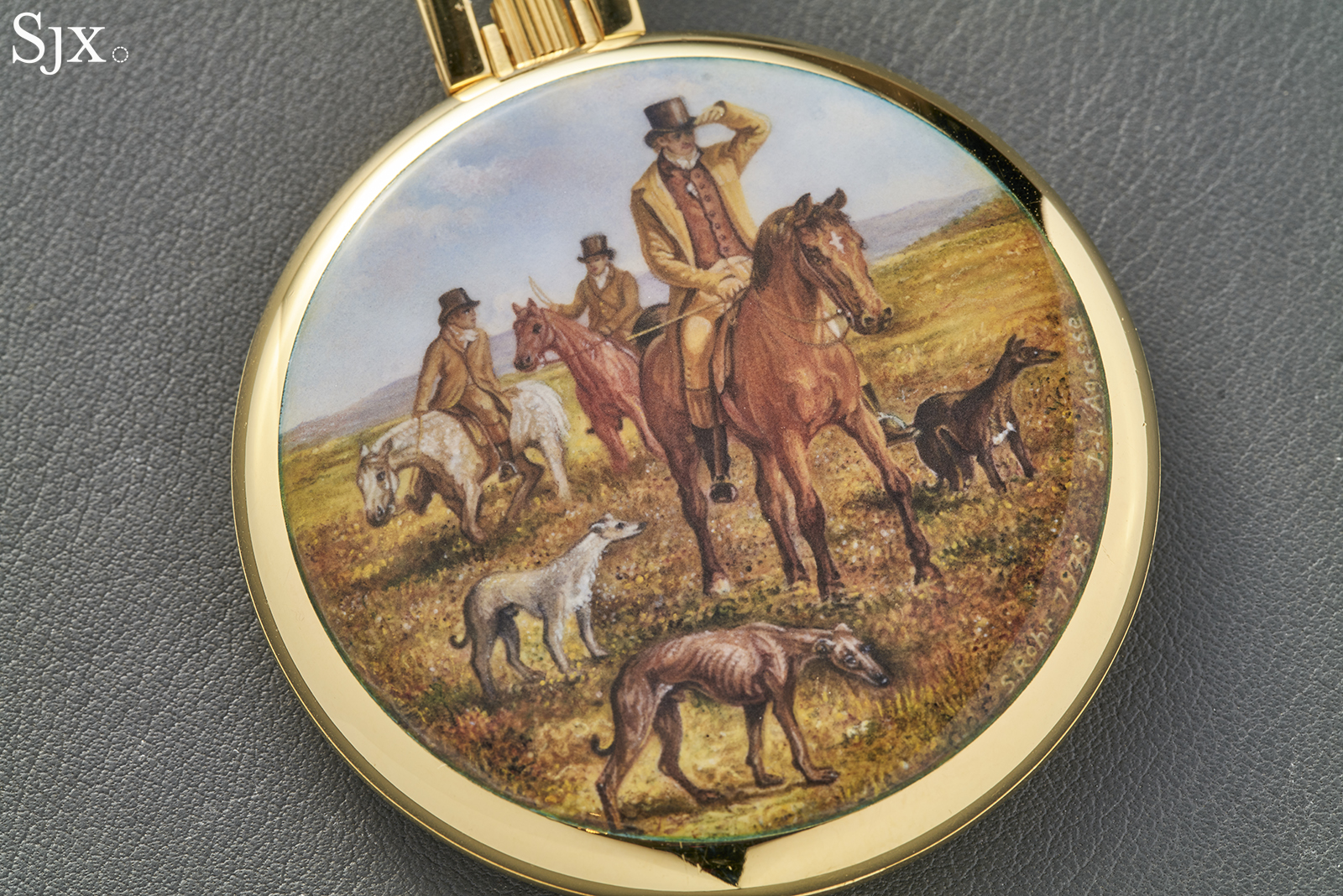
Another example of the same reference reproduces English artist John Webber’s 1784 painting “Guerriers Hawaiiens”. It is one of the few paintings that Marthe Bischoff produced for the firm.
Webber was the official artist on Captain Cook’s tragic third expedition, which proved to be his last. After returning to Europe, Webber turned some of his numerous sketches into paintings, the most famous being “The Death of Captain Cook”.

Lot 855 – Piaget Répétition à Minutes à Carillon
Rather than enamel, the most extravagant pocket watch in the auction focuses on gem setting. The front cover, front of the bow, and case band of the 58.5 mm hunter-style case are set with 246 baguette-cut diamonds (22.6 carats total) while 89 baguette emeralds (8.83 carats) adorn the reverse cover, the other side of the bow, as well as the time-setting button and repeater slide.
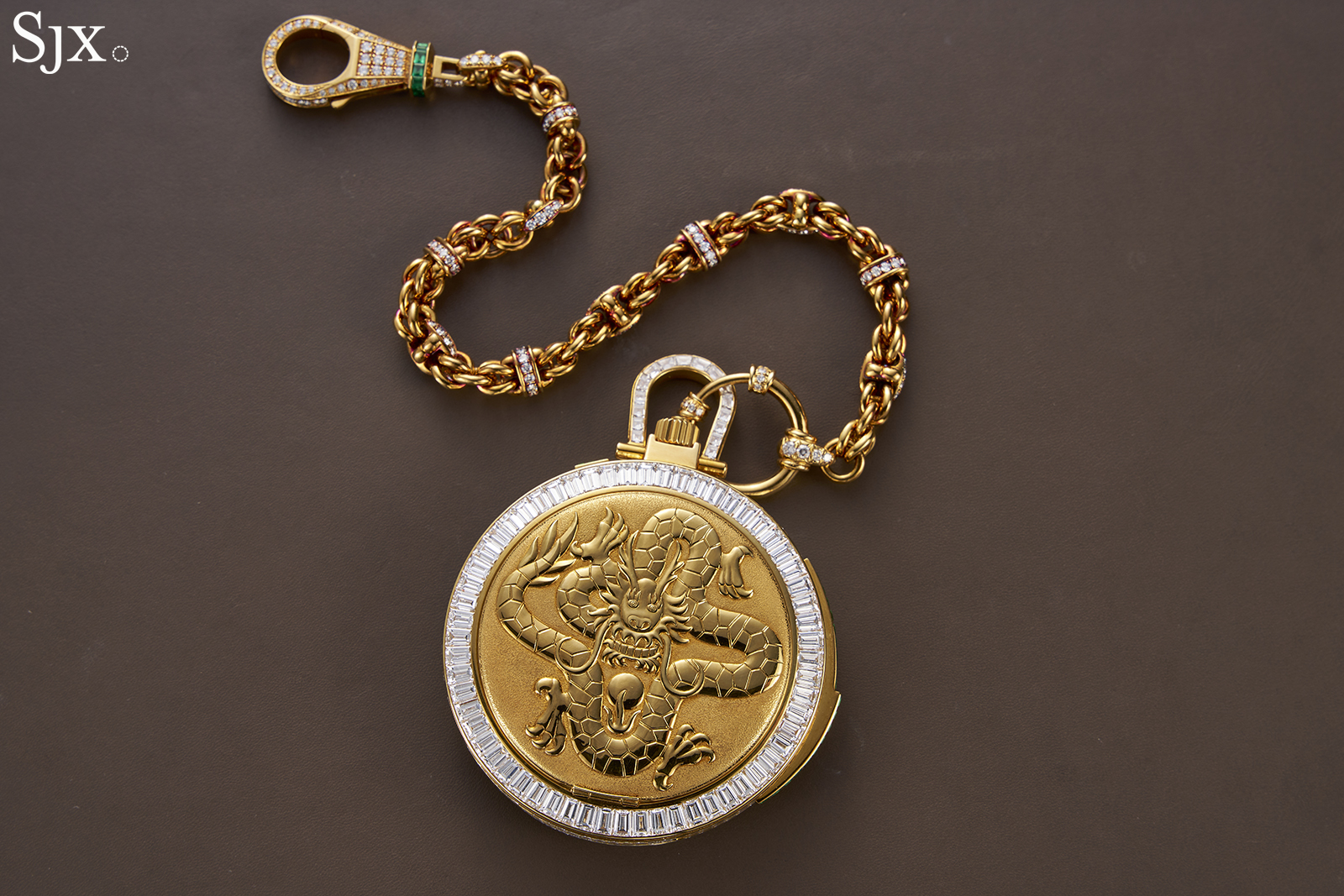
The engine-turned solid gold dial is further set with 60 baguette cut diamonds (2.17 carats) and 12 baguette emeralds to mark the hours (0.86 carats) as well as 12 brilliant-cut diamonds and mother of pearl insert.
Finally, the matching chain is set with 108 tiny brilliant-cut diamonds (1.80 carats) and 12 square-cut emeralds (1.02 carats). That amounts to 26.64 carats of diamonds and 10.71 of emeralds, surpassing even Patek Philippe’s emerald and diamond-set Grandmaster chime (20.54 and 7.87 carats, respectively).
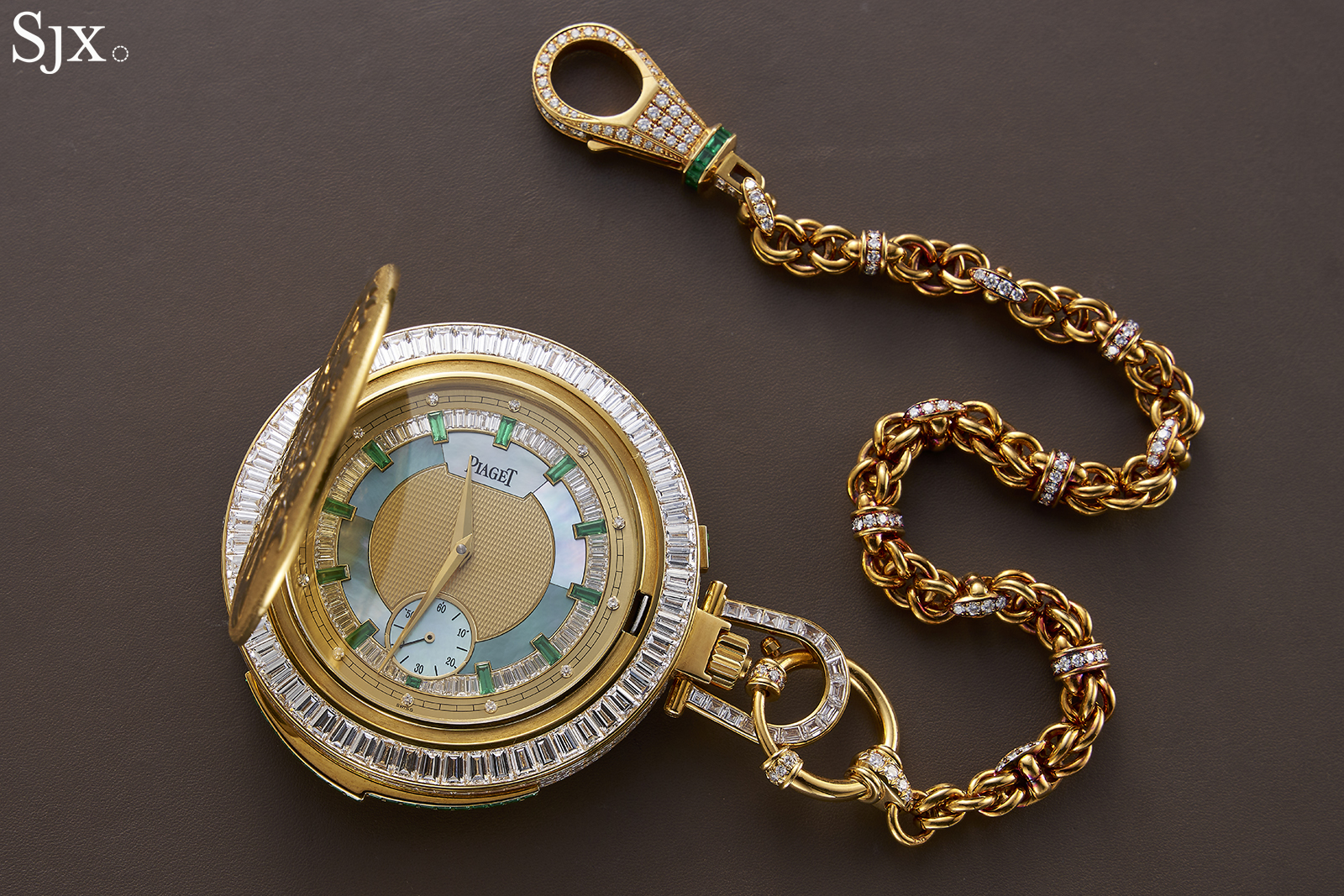
Piaget debuted this watch, with its monumental display stand, in 1996, in anticipation of the Hong Kong handover the following year. Many watch brands released limited editions to commemorate the handover, which were popular with wealthy Hongkongers as evidenced by several examples in this auction.
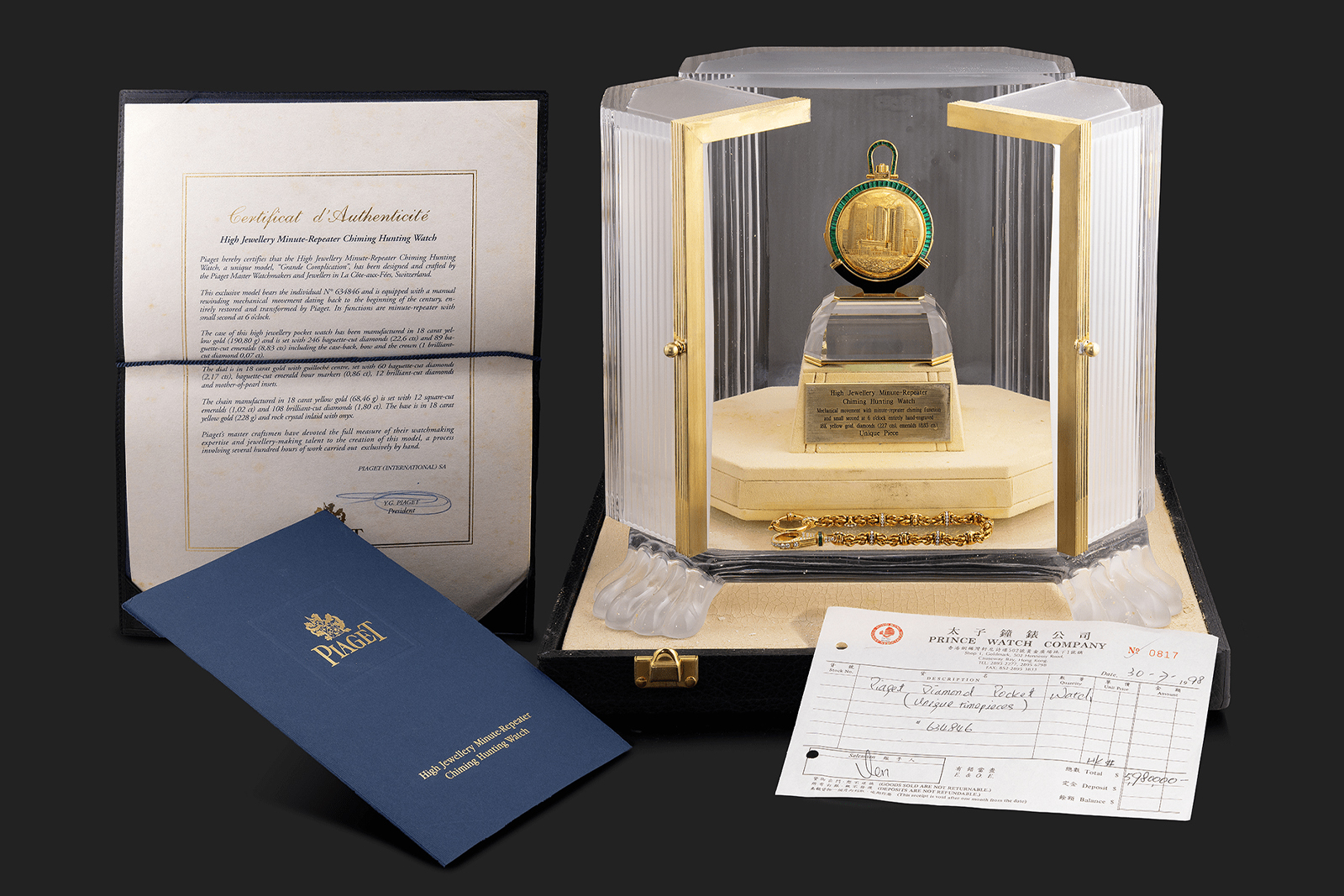 Image – Phillips
Image – Phillips
The back is painstakingly engraved with a view of the Hong Kong skyline as viewed from Victoria Harbour. The two skyscrapers are Jardine House and Exchange Square, and the low wide building below is the General Post Office. If this engraving were made today, it would include even more skyscrapers – and a Ferris wheel.
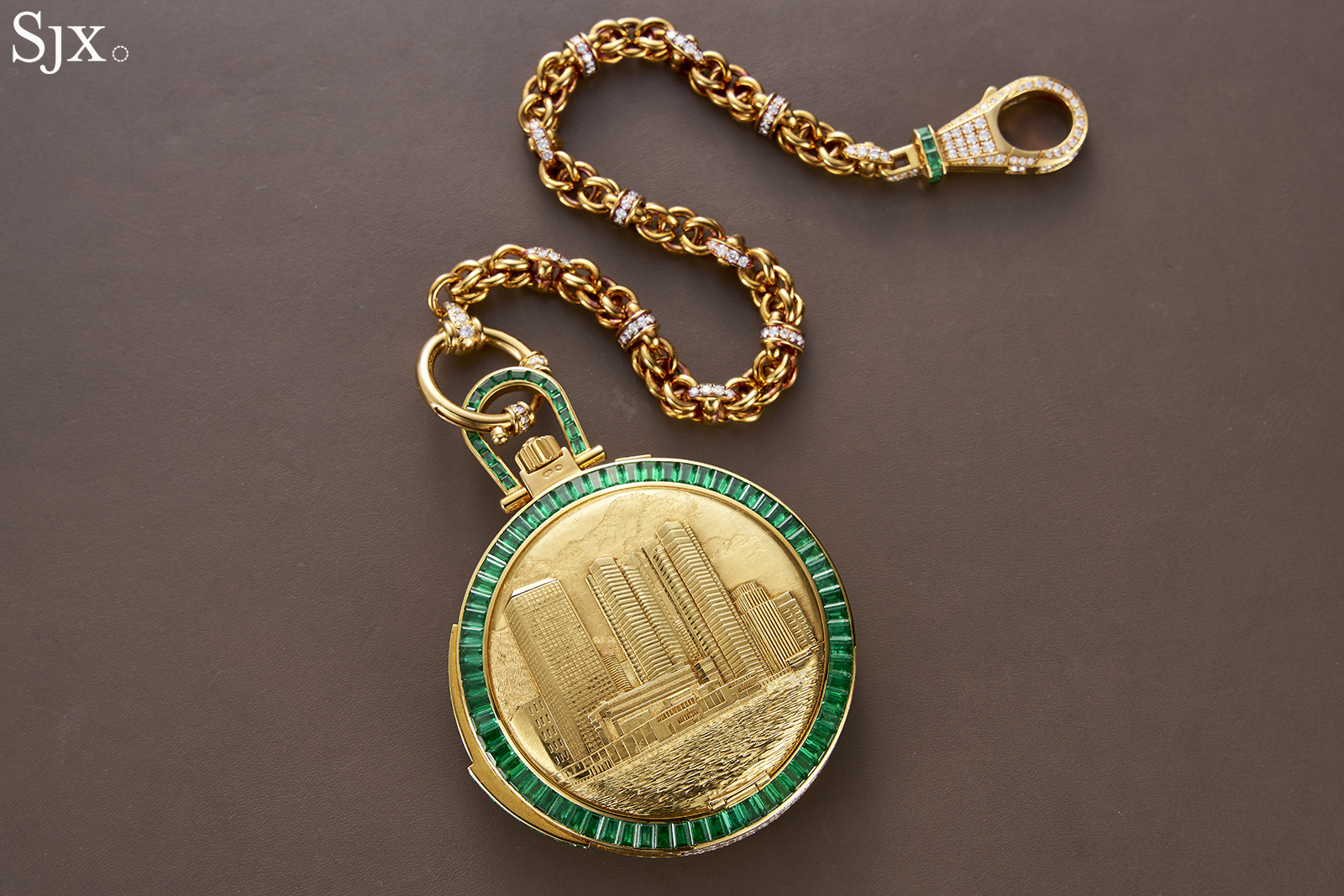
Piaget used a relatively common repeater movement with imitation-Westminster chimes on four gongs, made by Constant Piguet (or possibly Eduard Jean-Richard) from a LeCoultre ebauche. This movement is likely from a Longines watch based on the styling, but it was completely refinished and hand engraved to match the decadence of the case.
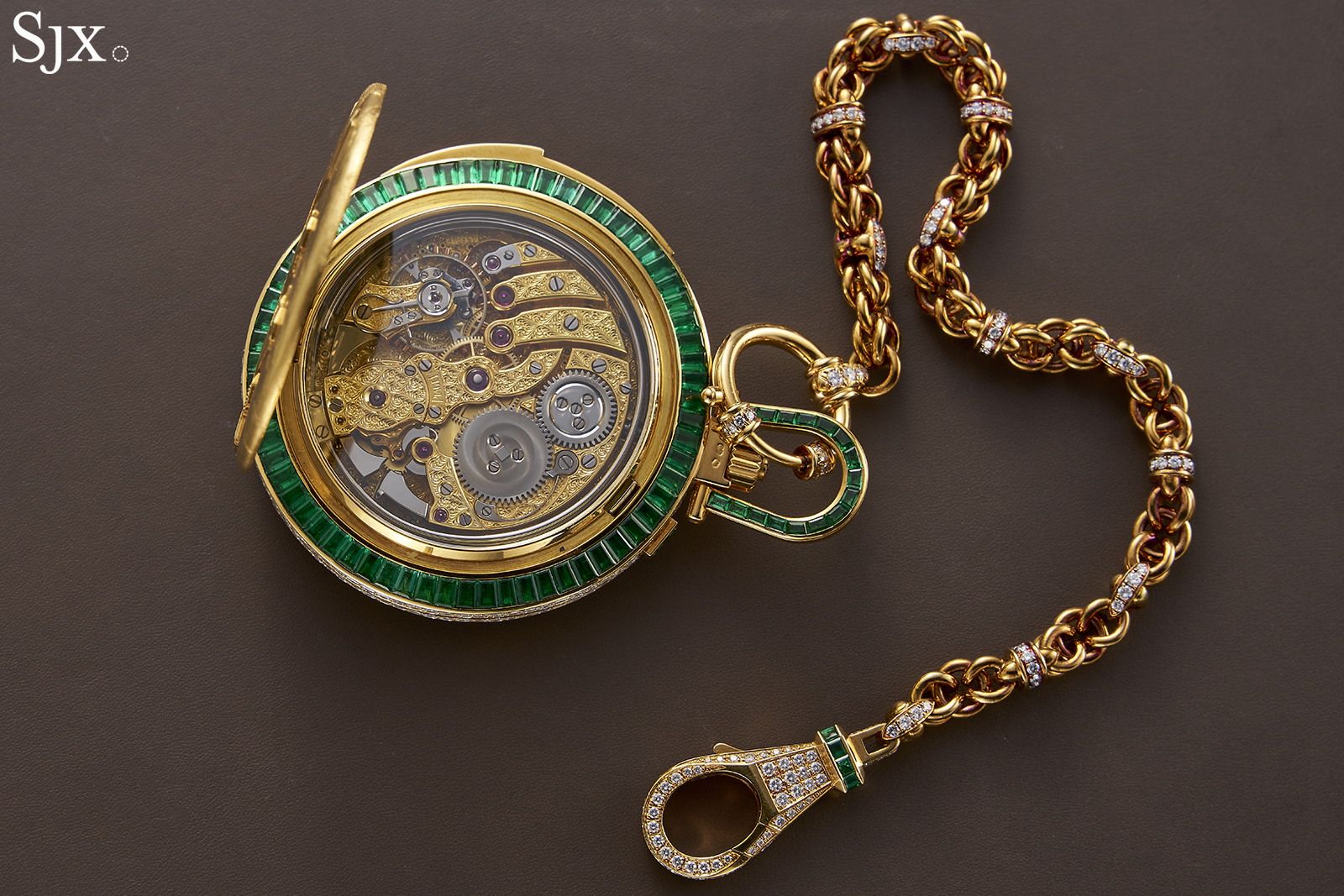
Prince Watch Company – which is still an authorised Piaget retailer today – sold this watch the year after the handover for HK$5.98 million, making it a relative value buy today with an estimate of HK$700,000 – 1.4 million (US$89,700 – 179,000). The near half-kilogram of 18k gold used in the watch and stand alone would be worth around US$40,000, but its cultural value demands preservation.
Lot 890 – Parmigiani Fleurier Meccanica II
In terms of gem-set wonders, the Piaget’s only potential rival is the Meccanica II by Parmigiani Fleurier – built in the same town where the previous Chinese market watches were made nearly two centuries earlier. Parmigiani continues to build such watches today, like the La Rose Carrée from 2021.
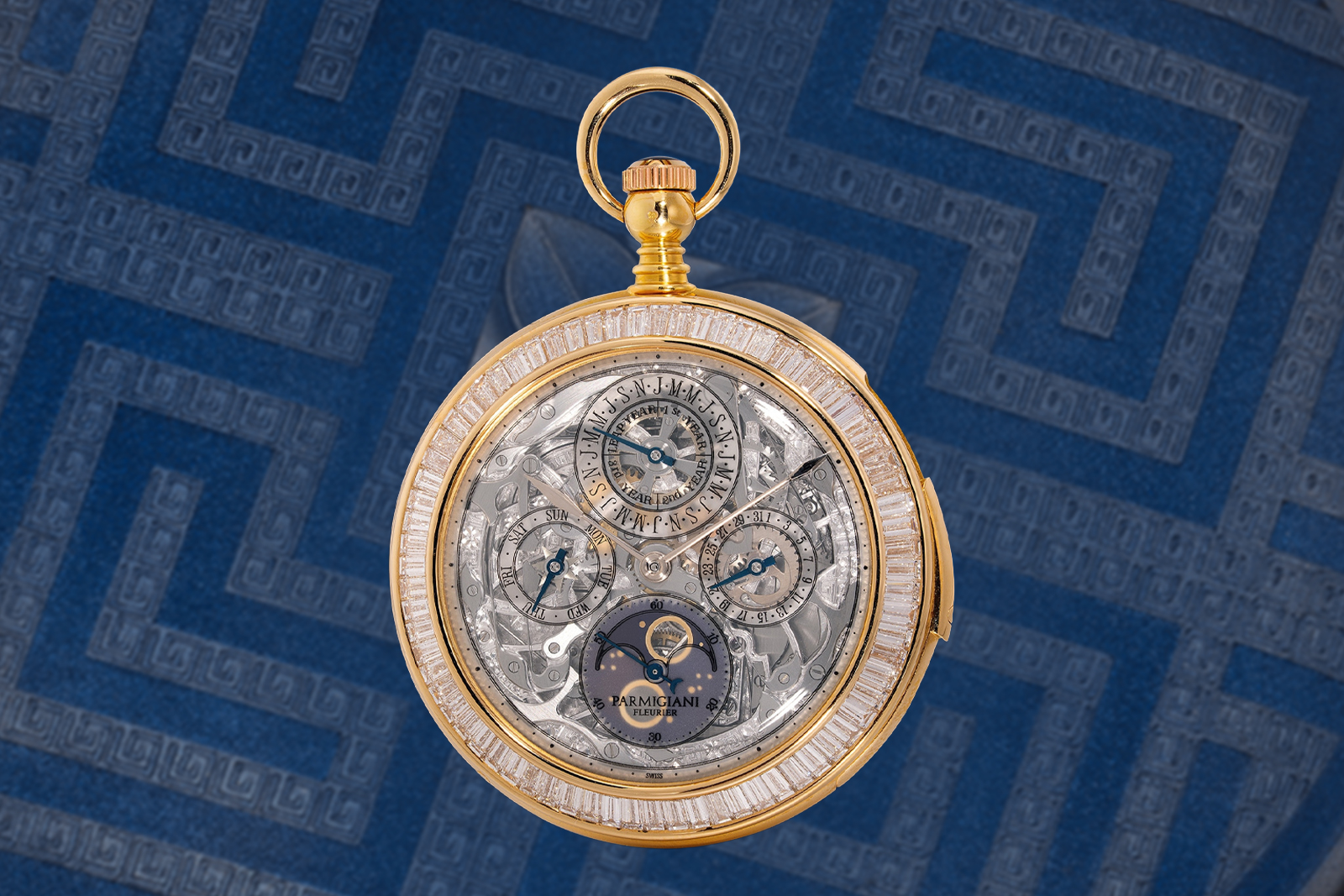
As its name suggests, the Meccanica II was a follow up to the the Meccanica, another unique pocket watch with a nearly identical movement and crystal dial. The Meccanica II added 25.93 carats of baguette diamonds, and a seconds hand. Oddly, the Meccanica III shares almost nothing with the first two, being a white gold minute repeating split seconds chronograph with an onyx dial.
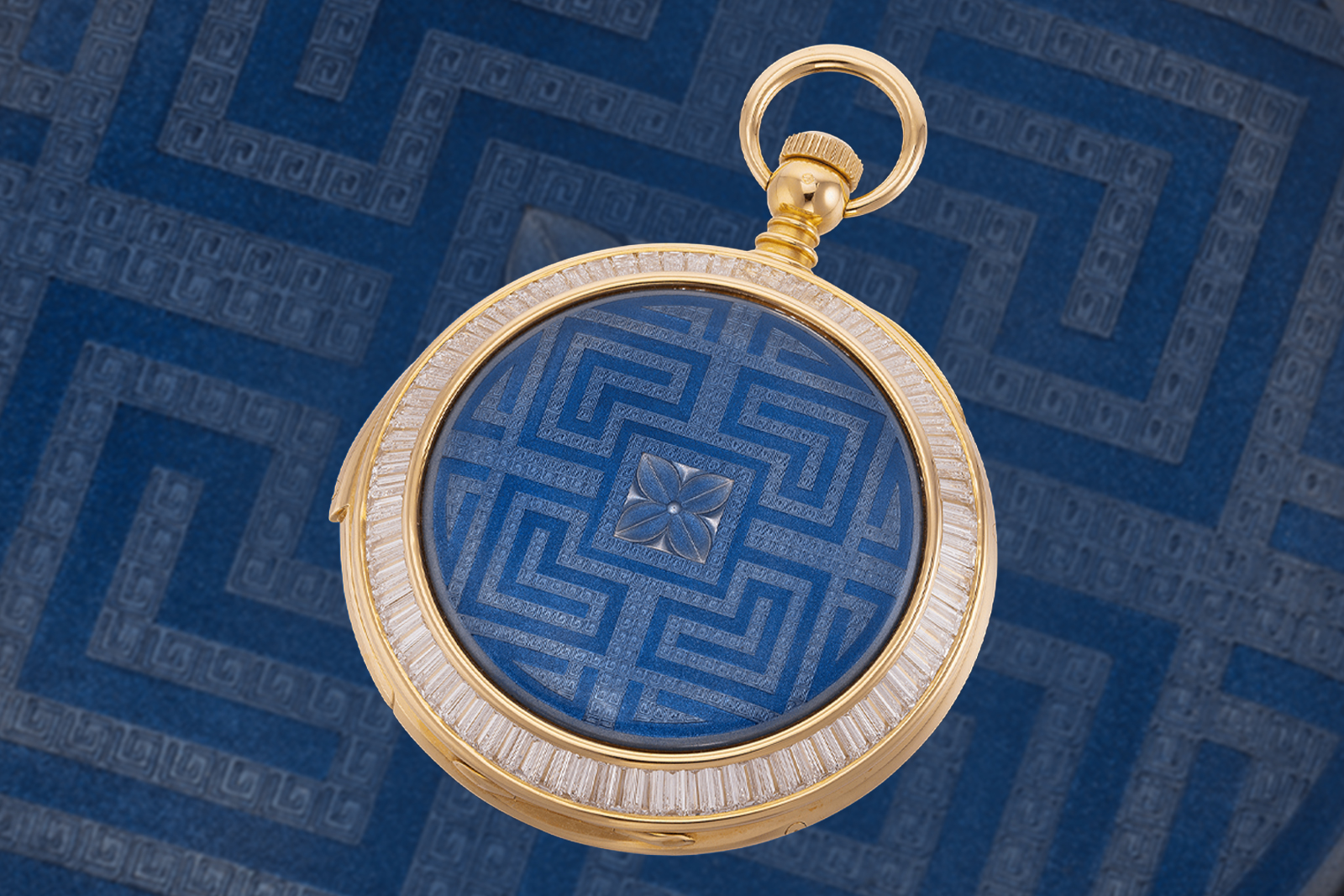
The movement, based on a LeCoultre ebauche from the turn of the century, is equipped with a perpetual calendar, fully visible though the sapphire dial. The back is enamelled with an abstract pattern, a common motif for Parmigiani watches. It would make for an ideal display piece, as it is paired with an enamelled stand made of gilt silver.
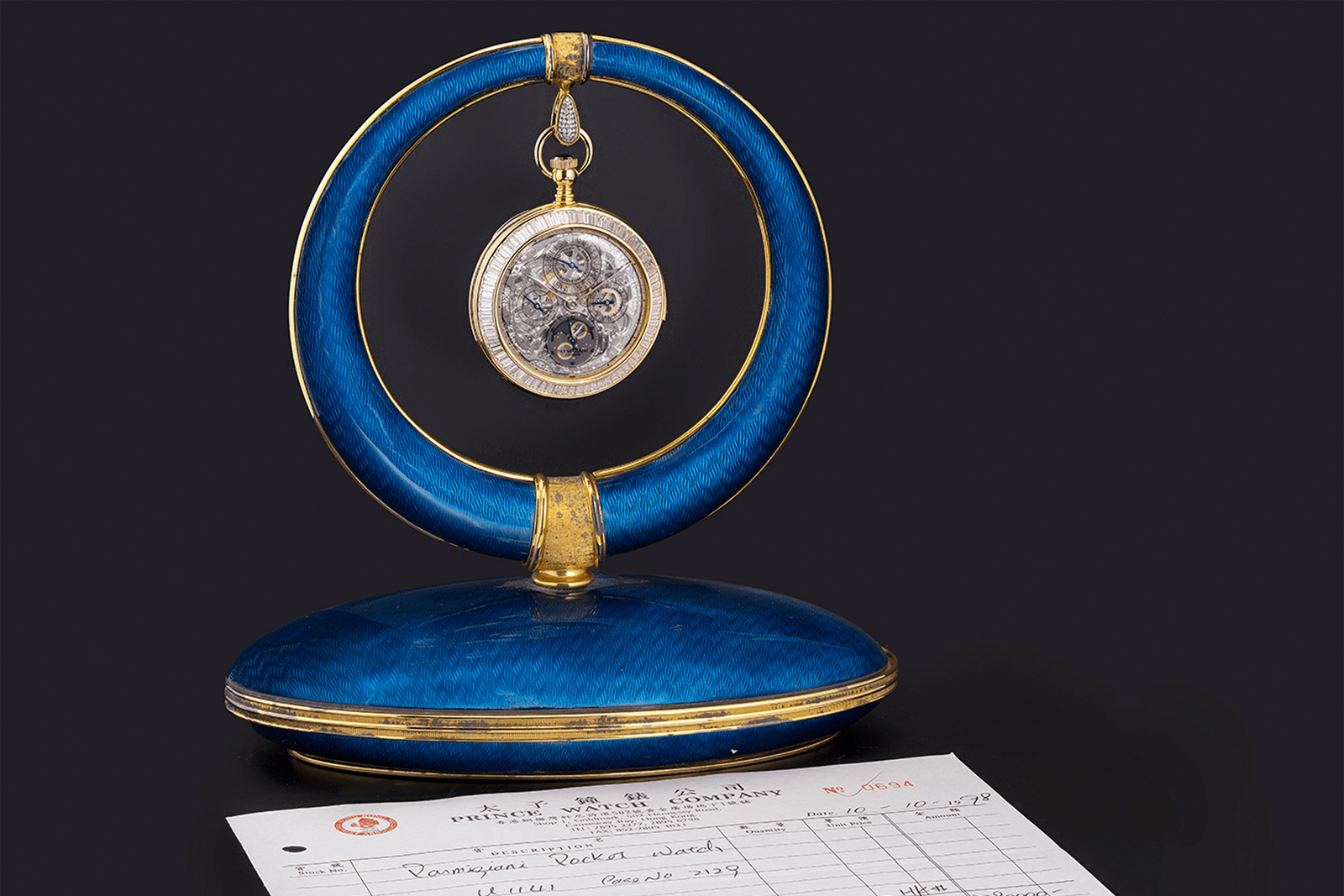
Like the previous, Prince Watch Company sold the Mecciana II in 1998. Compared to its original retail price of HK$3.34 million, the HK$700,000 – 1.4 million ($89,700 – 179,000) estimate is quite reasonable.
Preview and auction
The sale and preview exhibition will take place at Phillips Hong Kong in the West Kowloon Cultural District.
Preview
Open daily November 15-23, 2025, from 10:00 am-7:00 pm
Auction
November 21 – 2:00 pm (Session I lots 801 – 901)
November 22 – 2:00 pm (Session II lots 902 – 1014)
November 23 – 2:00 pm (Session III lots 1015 – 1123)
(All times are local to Hong Kong, GMT+8.)
G/F WKCDA Tower
Cultural District
8 Austin Road West
Kowloon, Hong Kong
For the full catalogue, visit Phillips.com.
This was brought to you in partnership with Phillips.
Back to top.

